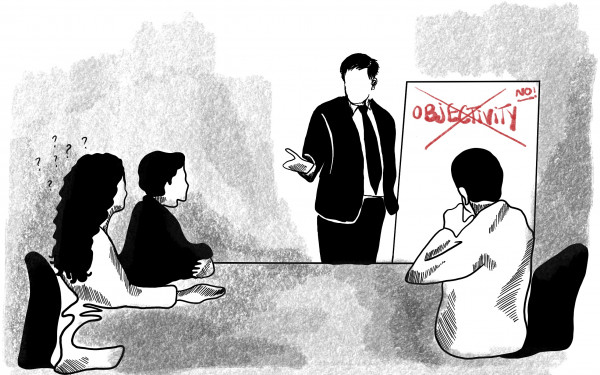Don’t Believe Everything You Read
Sponsored Content Isn’t Harmless
Newspaper ad revenues are plummeting, faster than anyone predicted.
The rapid loss in revenue is forcing newsrooms to make decisions they probably never thought they’d have to make.
One increasingly popular decision is to provide “native advertising” services to sponsors.
It’s a tactic being seen by newspapers industry-wide, from Wired to The New York Times.
It amounts to newsroom staff creating content sponsored by a third party, making the decision to write the article a business matter rather than an editorial one. As a new form of advertising, the level of control the sponsor gets over the content isn’t firmly established—just a range of ad package options offered by media organizations.
A lot of these ads seem to be harmless fluff, such as a feature at a sponsor’s resort or a paid product review where you may only notice the “Advertisement” tag after reading half of it.
These articles typically don’t try to emulate hard-nosed, investigative journalism, although the design style will match that of regular content.
But even so, the worth of this kind of advertising (and it does have value, currently one of the few upward trends in the newspaper business) is derived from the fact that, at least for a moment, the reader is tricked into consuming an ad.
It’s a clever technique to be sure, but paid portrait work by news media is just capitalizing on the trust readers have in an established media institution to be fair, and to get things right.
The cost of this new kind of ad to that credibility doesn’t seem to be part of the equation in the sponsored content gold rush.
Postmedia, one of the biggest media groups in Canada, regularly runs a page of content “in association with” the Canadian Association of Petroleum Producers in its Financial Post.
The CAPP logo is seen on the pages of the Post’s “Energy” section (with Google’s DoubleClick ad services recording the clicks through this link), and in print, syndicated in the business section of Postmedia’s national chain of newspapers. That CAPP connection is noted less clearly (if at all) when syndicated online, however.
The CAPP is, in their own words, “the voice of Canada’s upstream oil, oil sands and natural gas industry,” essentially a lobby group funded by energy companies. Much of what gets printed in the “Energy” section amounts to corporate portraiture, recounting the careers of these illustrious “oil men.”
“Find us on Facebook and show your support for the oil sands industry,” reads a more traditional ad to the right of one of these sponsored stories. Well, you were just reading about how ahead of the curve petro-states are in carbon capture technology, so why not? You’ve just been warmed up to the idea by another ad in disguise.
The sad truth is that the more ambiguous the intent of the article is, the more valuable it is to clients. And while pro-oil sands content gets sponsored, there’s little financial incentive to sniff out the other side of the story.
It just seems like bad practice to run this kind of advertisement for a politically contentious issue—the responsibility for honest journalism is falling to the wayside to keep the lights on.
The old mentality is that advertising and editorial should be kept separate. Although newspapers are scrambling to find any new source of revenue, it’s imperative that they realize their credibility is the most valuable asset they hold.
Sacrificing that for an advertising strategy is a dicey bet, even when putting aside the risk of a misinformed reader.
This article originally appeared in Volume 34, Issue 10, published October 29, 2013.


_600_832_s.png)




